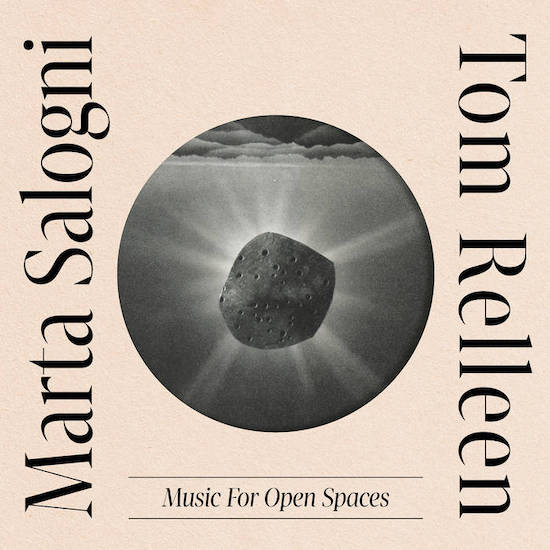In Music For Open Spaces, Marta Salogni and Tomaga’s Tom Relleen explore different geographical spaces through heavily improvised ambient pieces. Created just before Relleen’s death from cancer in 2020, the album was recorded between London, the Joshua Tree desert and the Cornish coast: setting out to express these environments through a palette of tape machines, synthesisers and bass guitar.
Part of the album’s intrigue lies in the challenge of identifying which location each piece deals with. This is supported by its esoteric track titles. Any listeners expecting ‘Fauna’ to illustrate these spaces’ wildlife is wrong-footed by waves of cold, alien drone. In the absence of sounds which clearly indicate the sea, little distinction is presented between the quiet, isolated environments of the desert and coastline. As a result, the album’s sense of place is most distinct where it seems to present London – not least in the industrial churns of ‘Snarl’, and fog of disorientating, chiming synths in ‘pING poNGS’.
The landscapes of the desert and coastline are chiefly expressed through the album’s use of space. ‘Furthest Fire’ presents sparse bass plucks amidst a low-frequency rumble; occasional percussive sounds are heard so quietly and distantly that they suggest the crackle of a well-worn tape. Textures pull towards us and retreat in these sparser tracks, as in the eery synths of album closer ‘FFXX’, evoking how the mind, freed from distraction, may still experience sudden thoughts, ideas or anxieties in these quiet spaces.
This treatment of space supports Music For Open Spaces’ strange presentation of time. The track ‘Clocks’, composed of sparse bass plucks manipulated with delay, conjures the melting creations of Salvador Dalí. Opening track ‘Desert Glass’ features the sounds of a tape being wound backwards and forwards, revisited in the winding textures of ‘Internal Logic II’. Supported by the album’s frequent use of lurching drone and lack of grounding percussion, time takes on an unsteady, elastic quality throughout the album.
This underscores the real strength of Music For Open Spaces: rather than vividly portray the physical recording environments in themselves, it points to the strange psychological sensations they might produce. Viewed in this way, this disorientating and abstract record can be considered a work of sincere, illuminating realism.


